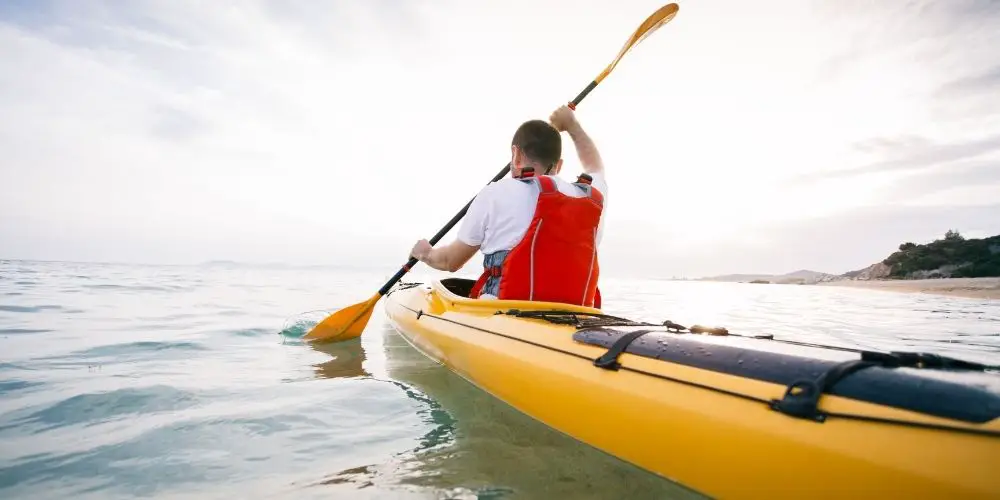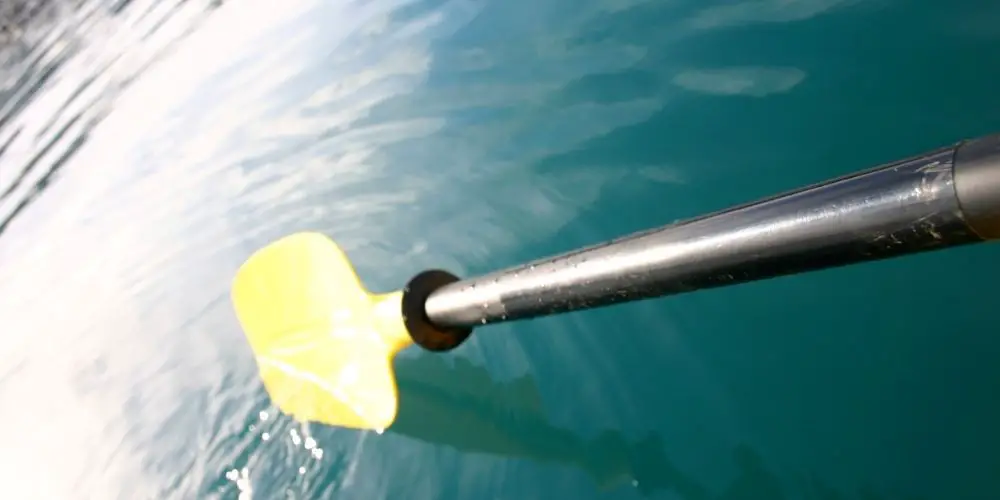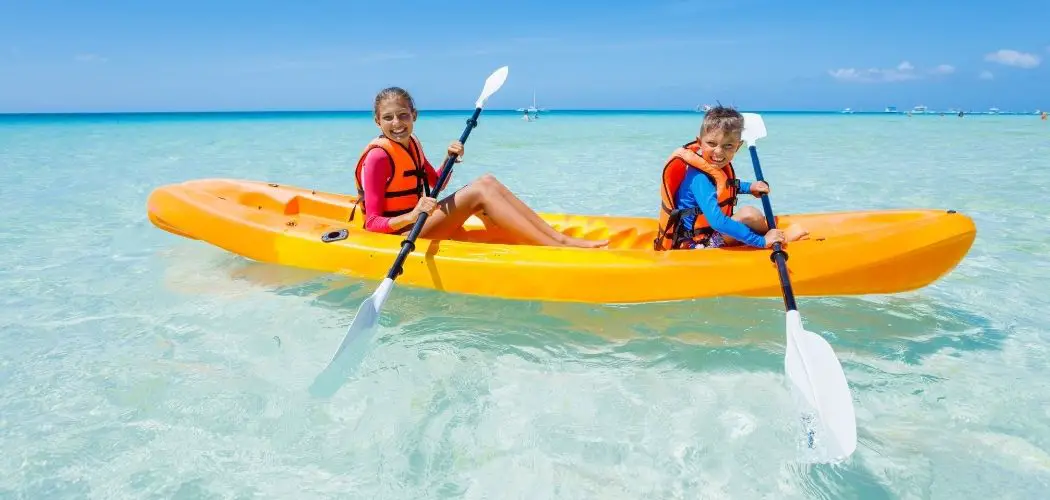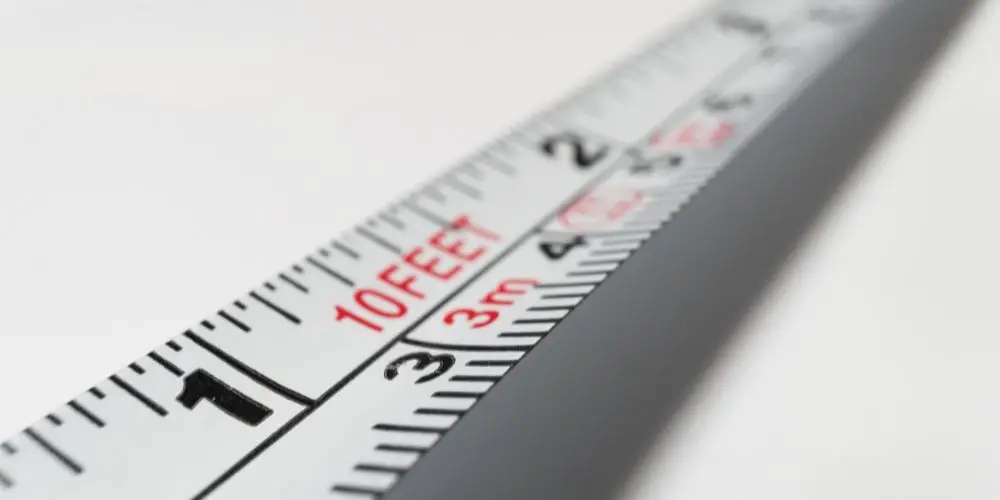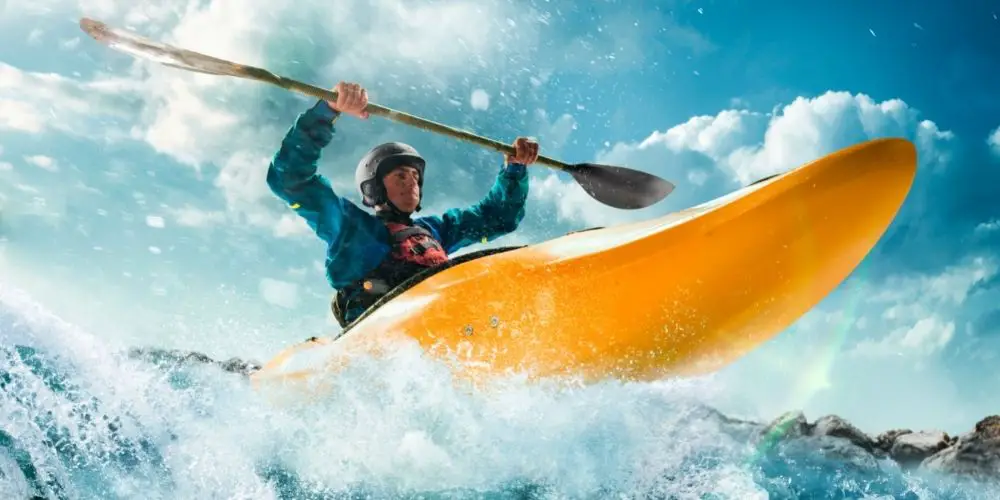At some point in time, most kayakers likely ask themselves, “What size kayak paddle do I need?”. Getting the wrong size could make the difference between an easy tour and one that overworks you.
You should know that choosing the right paddle size involves not just the overall paddle size, but the blade and shaft size as well. The taller you are and the wider your kayak is, the longer the paddle you will need. Size is also affected by what type of kayaking you choose to use the paddle for.
Tall kayakers (at least 6′ tall) need the longest paddles (roughly 86 – 96″ long). And the shortest kayakers (less than 5′ tall), need the shortest paddles (roughly 78-94 inches long), also depending on boat width. Further, different kayak types require different paddle sizes, with the most narrow performance kayaks requiring shorter paddles and recreational kayaks requiring longer ones. Read on to learn about size specifics and other important factors.
Why do you need to have the right size kayak paddle?
The average kayaker paddles a mile in about 20-30 minutes, but your excursion could last for hours. Something worth mentioning is that the right size paddle may make the whole kayaking process more fun, for however long it lasts.
When it comes to recreational kayaking, this is important, as you may even have kids kayaking with you. And if they aren’t enjoying the activity, you likely won’t be either.
What happens if you buy the wrong size kayak paddle?
Discomfort and Injury
Choosing the wrong size kayak paddle could lead to discomfort while kayaking, slower or poorer touring performance, as well as incompatibility between your kayak and paddle.
This is not to mention that long-term discomfort with the wrong size paddle could lead to injury.
Money Wasting
If you choose the wrong size only to go kayaking and realize it doesn’t work well, you may only have a limited time to return it to the retailer, if at all. Some stores won’t accept returns if you damage the product.
If this happens, you’ve just thrown about $50 down the drain, and maybe more if you choose an expensive brand. And that is just for one wrongly sized kayak.
What should you consider when buying kayak paddles?
When buying kayak paddles, make sure to factor in your comfort level, the paddle price, blade materials and durability, the blade size/shape, appearance, the shaft shape, the intended user, the intended purpose, and the overall length of the paddle relative to your height and the kayak’s width.
How does it look?
Appearance is the least significant factor because when you’re on the water, the top priority is safety. However, consider that more flashy or special designs will usually cost more.
The one aspect of appearance that is important for your safety is your visibility to other boaters. Choose neon or brightly colored paddle blades so that other boaters (especially motorized boats) can see you from further away.
What is the comfort level?
A comfortable kayaking tour is ideal. But if you have a paddle that’s too short for your height and your boat width, you could be working overtime to get the blades swiftly through the water.
On the other hand, a too-long paddle could end up being too heavy for you if you’re shorter, as your hand placement will be much further from the blades.
What is the cost?
Try and find a balance between quality and price. A quality paddle will make the tour more enjoyable, but you don’t need the best that there is if you’re just a recreational kayaker.
There are affordable brands for recreational and touring kayakers found at common outdoor retailers such as DICK’s Sporting Goods, Cabela’s, and Field & Stream. Decent prices typically land around $40-$50 per paddle.
On the other hand, more expensive paddles can cost up to a few hundred dollars, which may be more than the cost of your kayak in many cases.
What material are the blades made from?
The blade material doesn’t really affect the paddle length, but it’s also worth briefly noting when buying a paddle.
- Plastic: Plastic blades aren’t the most durable, but they usually are the most affordable. Their flexibility can hinder your speed in the water.
- Carbon-Fiber: Carbon-fiber blades are the most expensive, light, and stiff. They are the best for speed and durability.
- Fiberglass: Fiberglass blades are the Goldilocks happy medium. They are durable, efficient, lightweight, and moderately priced for the most part.
What are the blade size and shape?
Your typical paddle blade shape is going to be asymmetrical. However, you can also get more longevity out of a narrow and lightweight blade.
Additionally, wider blades will give you more speed than narrower ones, but over a shorter period of time because they’re larger and heavier.
Does it have a bent or straight shaft?
If you want to optimize paddling comfort, go with a bent paddle shaft. These are sometimes called “kinked” shafts. This design puts your hands in a more comfortable position for long-term paddling.
Does it have a multi- or single-piece shaft?
When choosing a paddle size, you may also consider a multi-piece for convenience purposes. You can store a multi-piece much easier than a single-piece, especially in smaller cars and sedans.
They come in two-piece and four-piece sets.
What is the overall length?
Overall length gets determined by your kayak’s width (the beam width) and your height. The taller the person, and the wider the kayak, the longer the paddle that you will need.
You need something to accommodate both your wingspan and the paddles’ ability to reach the water over the boat. For example, tandem kayaks will need especially long paddles.
Is it a low-angle or high-angle paddle?
There are two angle types for paddles – high-angle and low-angle. Low-angle paddles are for more recreational purposes like long, slow tours. And high-angle paddles work best for narrow kayaks toting faster and more aggressive kayakers.
As a rule of thumb, if you’re a beginner kayaker, you’ll probably want a low-angle kayak paddle. Look for that label when choosing.
What type of kayak are you pairing it with?
You can also consider the type of kayak you’re using to choose an appropriately sized paddle.
For example, with a whitewater kayak, your height is a more important factor than the boat’s width. Touring kayaks typically use shorter paddles compared to recreational kayaks, while performance (racing) kayaks use the shortest paddles.
On the other hand, if you’re using a kayak for fishing or exploring, you may just use a recreational size paddle, since you won’t be exerting much energy.
What size kayak paddle do I need based on my height and boat width?
See this table to understand how user height and boat width affect the paddle size you’ll need for low-angle paddles (touring, recreational, touring, and fishing kayaks). Note that when referring to “boat width”, this is the widest part of your boat.
| Boat Width | < 2′ | 24 – 28″ | 29 – 33″ | > 33″ |
| Your Height | Paddle Length | |||
| ≤ 5′ | 82.67″ | 86.61″ | 90.55″ | 94.48″ |
| 5′ – 5’6″ | 84.64″ | 86.61″ | 90.55″ | 94.48″ |
| 5’6″ – 6′ | 86.61″ | 86.61″ | 90.55″ | 98.42″ |
| ≥ 6′ | 86.61″ | 90.55″ | 94.48″ | 98.42″ |
And see this table to understand paddle sizes for high-angle paddles (sea kayaks and some touring kayaks use this style):
| Boat Width | 17 – 23″ | 23 – 25″ | > 25″ |
| Kayaker Height | Paddle Length | ||
| ≤ 5′ | 78.74″ | 82.67″ | 86.61″ |
| 5′ – 5’6″ | 82.67″ | 86.61″ | 90.55″ |
| 5’6″ – 6’2″ | 86.61″ | 90.55″ | 94.48″ |
| ≥ 6’3″ | 90.55″ | 94.48″ | 98.42″ |
What if I fall between two size ranges?
If you find that you’re stuck between a longer and a shorter paddle, but they both technically work for you, pick the shorter one. Follow this rule for children’s sizes as well. It’s better for a child to get a shorter paddle than a longer one so they can handle its overall weight.
It will be lighter in weight, which gives you more ease of use overall.
Are there different sizes for children?
Children also kayak, and children as young as 7-10 years old may be ready to kayak in a solo boat.
Children are generally shorter than adults, so they get shorter paddles. But do you need a paddle specifically for a child? Take a look at the paddle sizes a child will typically use:
- Children < 4′ tall: Stick with a paddle no longer than 71.65 inches
- Children 4 – 4.5′ tall: Stick with a paddle between 71.65 and 74.80 inches
- Children 4.5 – 5′ tall: Stick with a paddle between 74.8 and 82.67 inches
- Children > 5′ tall: Refer to adult paddle sizes
Conclusion
Knowing your kayak paddle size will optimize your kayaking experience in terms of comfort, endurance, and enjoyment. Remember to combine your height and your kayak’s width to determine the length of kayak paddle you should buy.
Making sure you factor in those dimensions, as well as the type of kayak you’re using and how comfortable you want to be, you can optimize your paddling experience.

